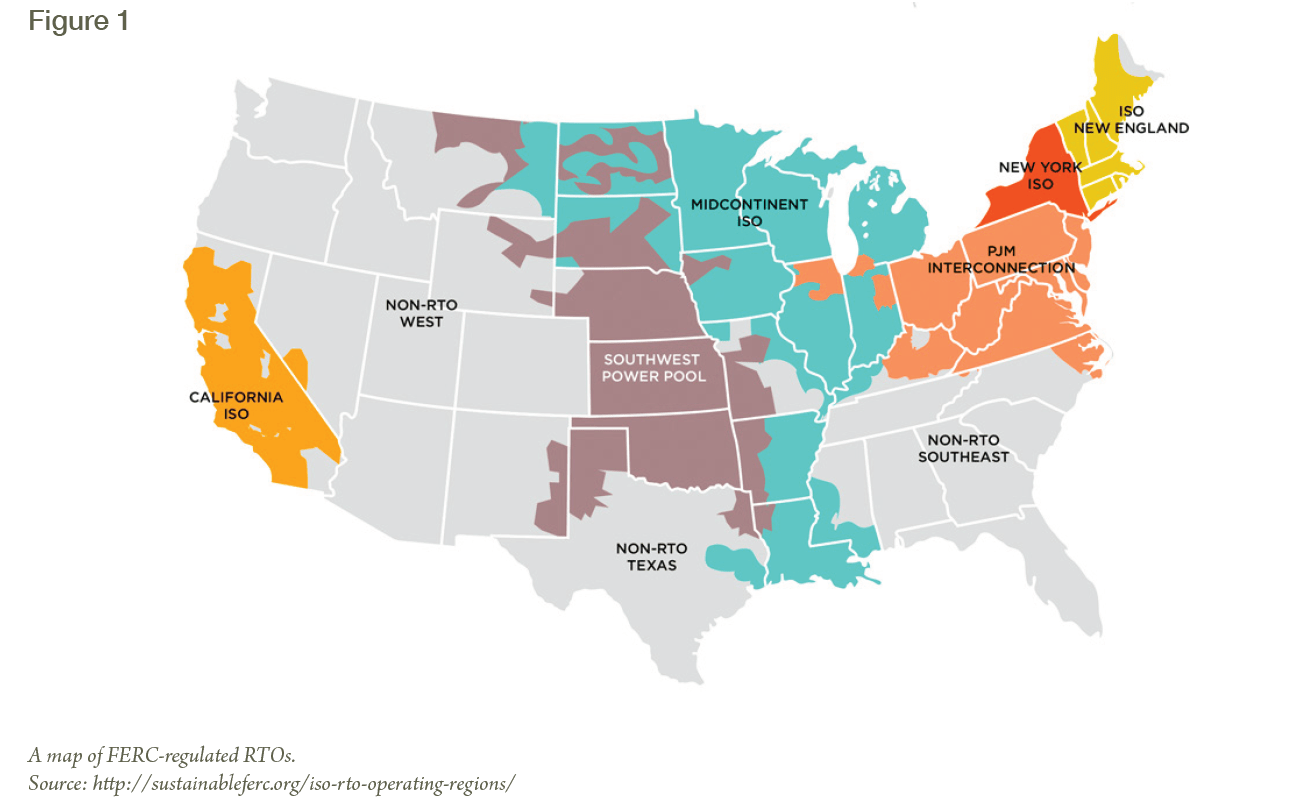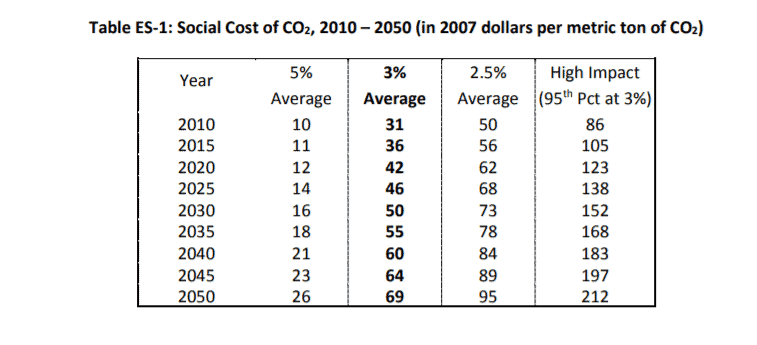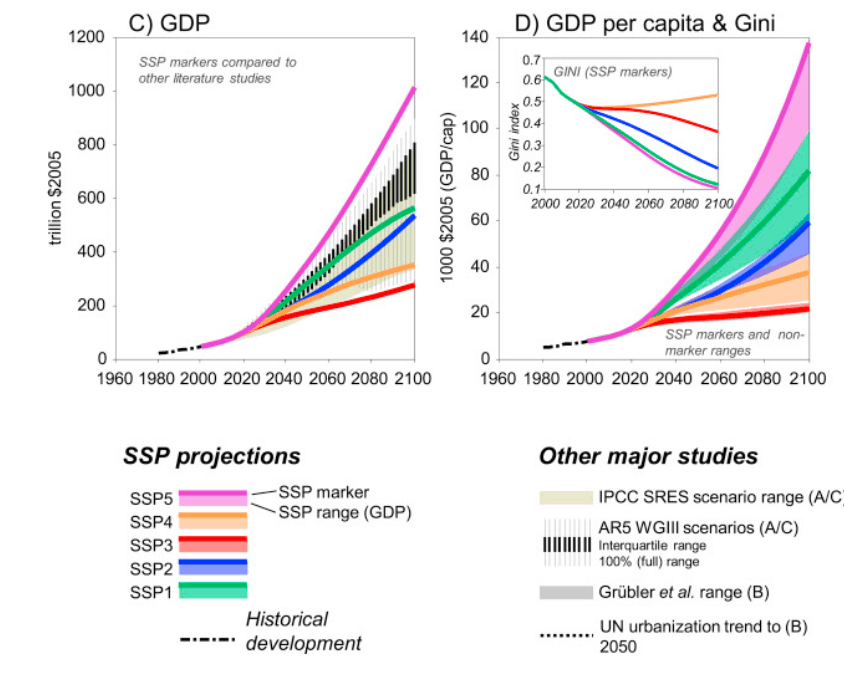Carbon Pricing Would Make Electricity Markets Less Efficient

Photo Credit: Getty
On Monday (November 16, 2020), I submitted comments to the Federal Energy Regulatory Commission (FERC) on its proposed policy statement encouraging regional trading organizations (RTOs) and independent system operators (ISOs) to incorporate carbon pricing into wholesale electricity rates. There are currently six U.S. organized wholesale power markets with customers in 35 states.

Wholesale carbon pricing is not exactly an idea whose time has come. As FERC acknowledges, only 11 states have carbon pricing policies—all in the form of emission allowances under cap-and-trade programs. None adds a carbon fee or tariff to electric rates—the type of policy FERC is promoting. Moreover, Congress has never enacted legislation to cap or tax carbon dioxide (CO2) emissions.
FERC claims carbon pricing would improve the “efficiency” of wholesale markets but does not explain how. Fortunately, in March 2020, the left-leaning Institute for Policy Integrity (IPI) published a 60-page report that clearly articulates the rationale underpinning the Commission’s proposal.
In a nutshell, electricity markets are said to be “inefficient” because market prices reflect only the private costs of producing and consuming power, not the social costs such as climate damages caused by power plant CO2 emissions. Consequently, the argument goes, market actors produce and consume more electricity from fossil fuels than is “socially efficient.” The cure for such “market failure,” IPI contends, is to increase wholesale power rates by fees equal to the “social cost of carbon” (SCC), as estimated by the Obama administration’s 2016 Interagency Working Group (IWG) report.
Although the IWG’s central SCC estimate for 2020 was $42 per ton of CO2 emissions, IPI estimates that a ton of CO2 “causes roughly $50 of damages.” In the IWG report, the central SCC estimate does not reach $50 until 2030. Unless you look up the IWG report (or have an exceptional memory for climate stats), you would not know IPI has increased the IWG estimate by 19 percent. Another case of “worse than we thought” advocacy? Perhaps.

My comment letter rebuts the “efficiency” rationale for carbon pricing. To begin with, the social cost of carbon is not a known quantity, but a range of guesstimates that vary widely depending on the assumptions and inputs fed into computer programs called integrated assessment models (IAMs).
For example, SCC estimates are highly sensitive to the discount rates used to calculate the present value of future climate damages and emission reductions, the IAM’s assumptions about climate sensitivity (how much warming results after the climate system fully adjusts to a doubling of atmospheric CO2 concentration), and whether the IAM projects strong, weak, or zero carbon dioxide fertilization benefits (the beneficial impact of rising CO2 concentration on plant growth, photosynthesis, and water-use efficiency).
In a recent peer-reviewed study, Heritage Foundation statistician Kevin Dayaratna, Guelph University economist Ross McKitrick, and CEI climate scientist Patrick Michaels re-ran the FUND model—one of the three IAMs used by the IWG—with updated empirical data on climate sensitivity and CO2 fertilization. They found that the social cost of carbon drops to very small numbers, with a 40 percent probability of being negative through the mid-21st century. A negative SCC is another way of saying a net benefit.
The IWG had peculiar shortcomings of its own. Two of the three IAMs used by the IWG are structurally biased, programmed to ignore the agricultural and ecological benefits of rising CO2 concentrations. One of the IAMs has an almost comical alarmist tilt, assuming no adaptation is possible once warming exceeds 2°C. The IWG relied on a 2007 study of climate sensitivity and refused to experiment with lower climate sensitivities estimated by observational studies since 2011. The IWG also used accounting tricks to inflate both the present discounted value of future climate damages and the perceived domestic benefits of the Obama administration’s climate policies.
However, even if the IWG’s SCC estimates were free of partisan bias, wholesale carbon pricing would make electricity markets less—not more—efficient, for three reasons.
First, wholesale carbon pricing would overlay, not replace, other more costly climate policies, such as renewable energy quota. Indeed, former FERC chairman Chatterjee recently assured state policy makers that wholesale pricing would not preempt state renewable energy mandates, many of which require faster power sector decarbonization than any tax based on conventional SCC estimates. Adding carbon fees to an already inefficient policy baseline would only increase inefficiency.
Second, even in theory, a carbon tax achieves socially efficient reductions in fossil energy consumption only if it is economy-wide and global. A carbon tax confined to one industry, sector, or country would realize only a small fraction of all potential low-cost emission reduction opportunities, and the meagre climate benefits would not begin to balance the costs of those subject to the tax. That is essentially what the Commission proposes: carbon pricing in one segment of one sector at sub-national scales. Ratepayers would be on the hook for tens of billions of dollars in higher electricity costs, yet the climate benefits would be undetectably small. An all pain for no gain policy is not efficient.
Third, the freedom to develop and utilize fossil fuels promotes human flourishing. That is not only an opinion held by many free marketers. It is also the clear implication of Riahi et al. (2017), a study by 16 top-tier climate researchers, including several contributors to the United Nations Intergovernmental Panel on Climate Change (IPCC) reports.
The study finds that, in 2100, global per capita GDP is greater and income inequality lower in the IPCC’s fossil fuel-intensive socio-economic development pathway (SSP5) than in all other development scenarios, including the “green road/sustainability” pathway, or SSP1. Here’s how the authors describe SSP5:
This world places increasing faith in competitive markets, innovation and participatory societies to produce rapid technological progress and development of human capital as the path to sustainable development. Global markets are increasingly integrated. There are also strong investments in health, education, and institutions to enhance human and social capital. At the same time, the push for economic and social development is coupled with the exploitation of abundant fossil fuel resources and the adoption of resource and energy intensive lifestyles around the world. All these factors lead to rapid growth of the global economy, while global population peaks and declines in the 21st century. Local environmental problems like air pollution are successfully managed. There is faith in the ability to effectively manage social and ecological systems, including by geo-engineering if necessary.
SSP5 is indeed the warmest development scenario, with greenhouse gas concentrations roughly equal to the IPCC’s high-end greenhouse gas forcing trajectory (RCP8.5). Yet in SSP5, global per capita GDP in 2100 is 10-fold greater than it was in 2000, and the gap between rich and poor countries is smaller than at any time in modern history (see chart below).
If carbon-intensive resource development is the most efficient social policy, how can any coercive decarbonization scheme truly be efficient?
